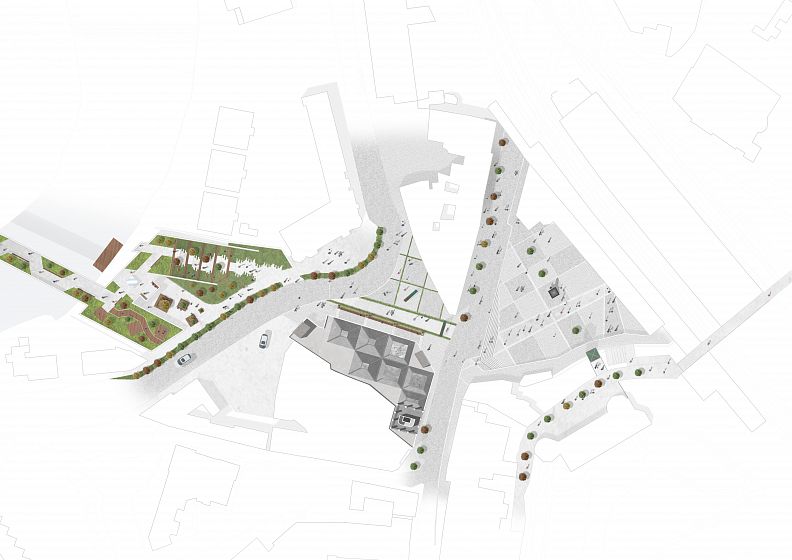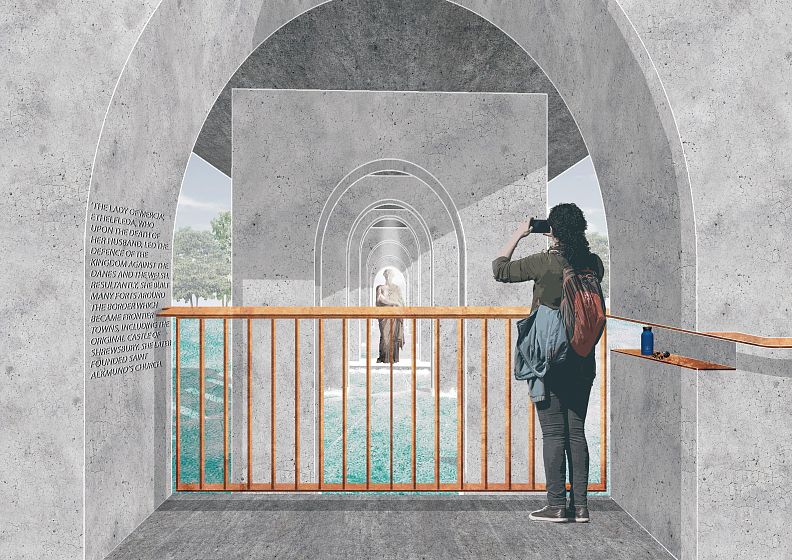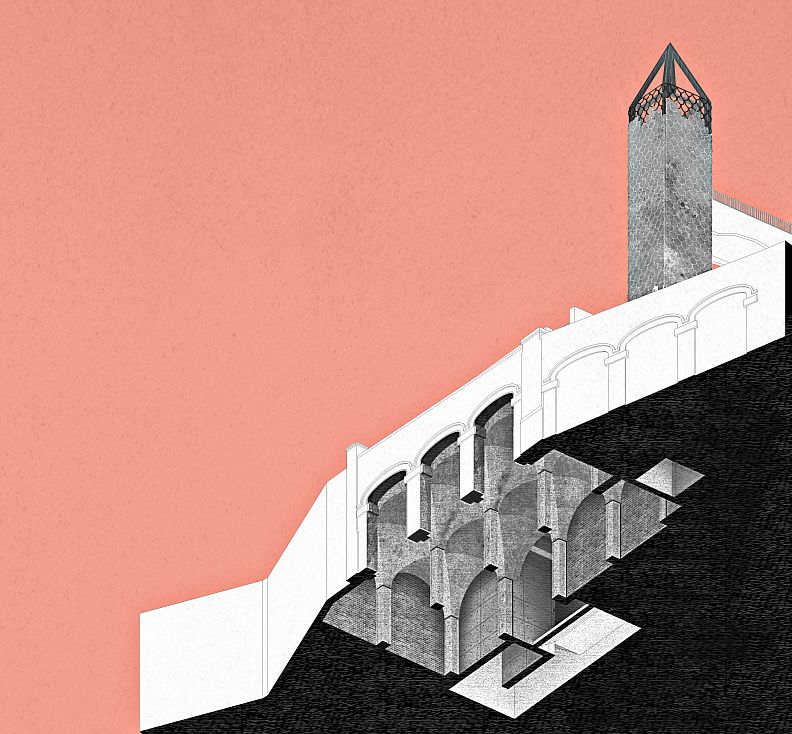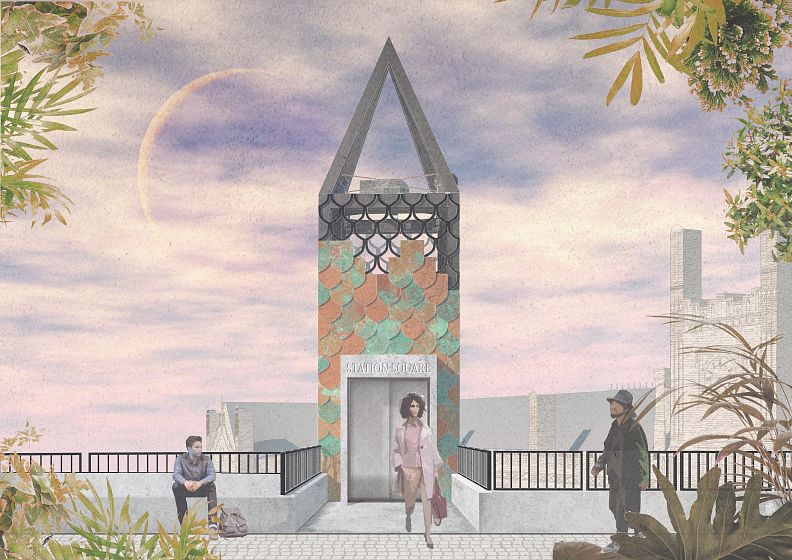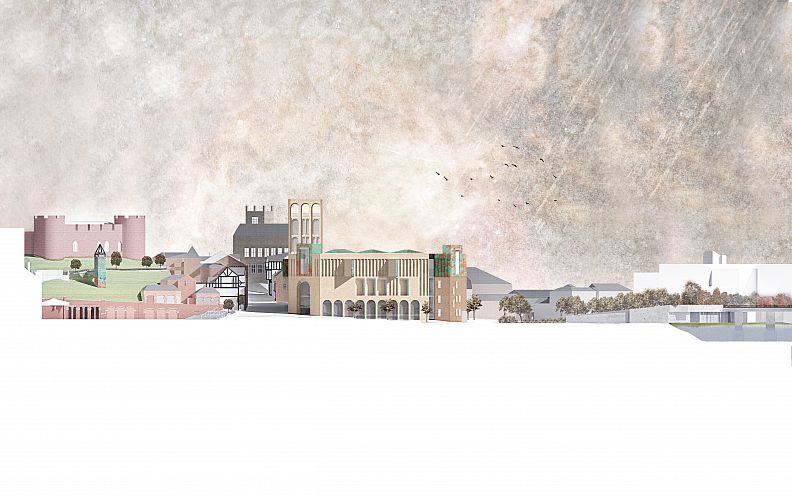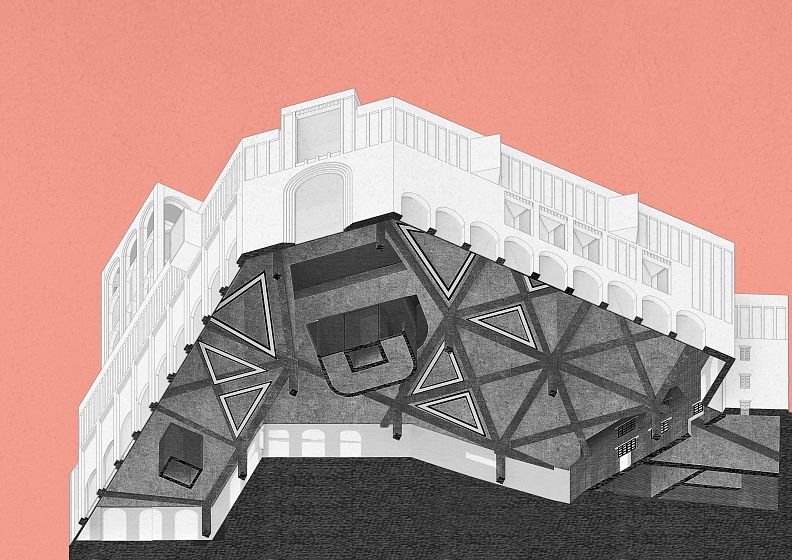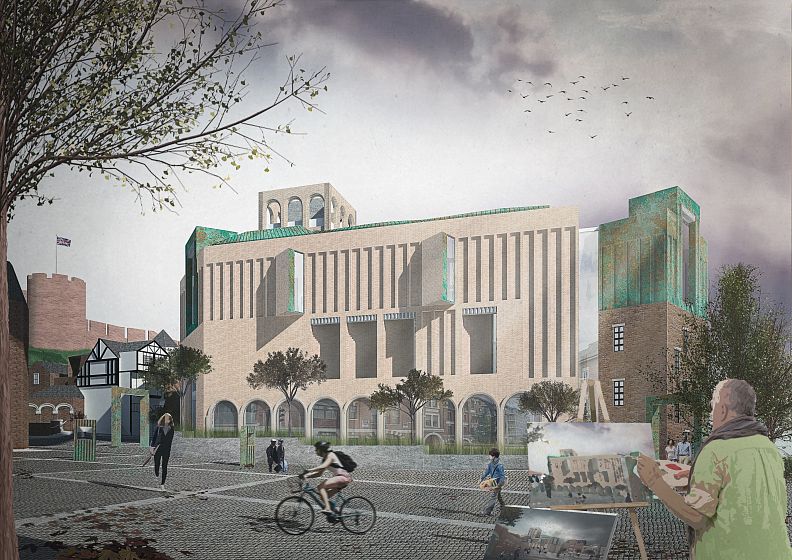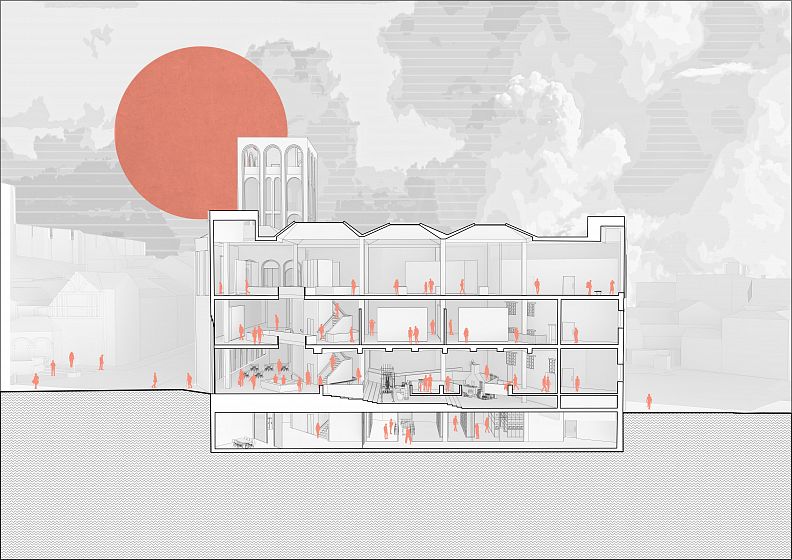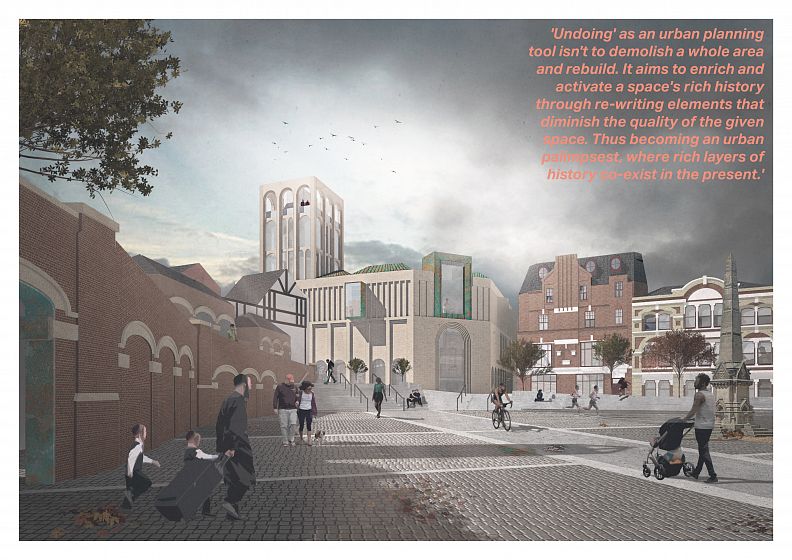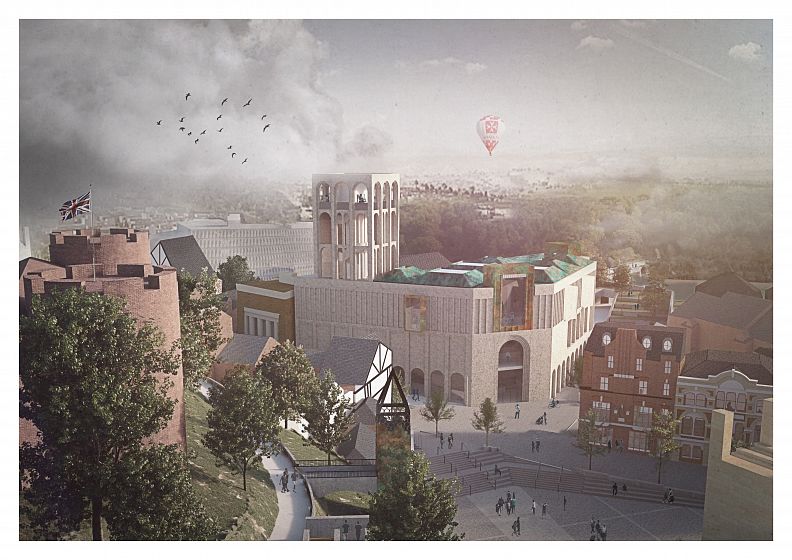Urban Palimpsest: Undoing & Rewriting

Project idea
The Context:
The site is a series of spaces outside of Shrewsbury Railway Station. Empirical observations highlighted a fragmented urban block, overused road systems, low-rise industrial units, convoluted circulatory routes, prioritised provision for vehicles rather than people, + an unnecessary carpark; juxtaposed against an embellished mock-Tudor style train station, a former Tudor school attended by Charles Darwin, a 12th Century castle + Victorian bars + hotel. All competing within the town’s main gateway - a significant place of exchange - the aforementioned urban actors created a visually cluttered + impractical series of spaces which lacked the ‘welcome mat’ identity - one that celebrates Shrewsbury’s historic + layered identity - as one might expect when entering a medieval town.
-------
The Project:
The project – a new town Welcome Mat/Gateway [comprised of three public squares, each accommodating an architectural element - a museum building, an urban lift + a green bridge] demonstrate how notions of ‘undoing’ + ‘rewriting’ within sensitive areas can provide solutions to urban problems formed from years of neglect + bad planning. These sensitive areas are what we call ‘architectural palimpsests’, whereby residues of past societies form the canvas on which to build upon.
The scheme draws on teachings from Jane Jacobs, Colin Rowe, Aldo Rossi and Gordon Cullen.
Project description
The Scheme: One Gateway, Three Squares
Square 1: Green Square
A proposed Green Square responds to a wooded nature trail and a river which bounds it. Terracing upwards, the Green Square connects to a pedestrian Green Bridge in order to bring the rest of the town outside of the river into play. The Bridge, deliberately exaggerated in its width, encourages prolonged lingering + congregation at a human scale, while at an urban scale resolves congested traffic, overused road systems + brings an isolated part of the town into the drama of the proposed welcome mat.
Square 2: Station Square
Bounded by a railway station + a castle, an existing car-park is rewritten as a sunken square giving priority back to the pedestrian. Stripped back in design, its purity lends to a ceremonial function serving to celebrate the castle + train station. Its articulation is given by its materiality; various cobble types from various periods of Shrewsbury’s history are separated by concrete paths informed by the castle geometries and desire lines. An urban lift whose form reflects the town’s skyline resolves the convoluted circulation of the area. What the Green Bridge does horizontally, the urban lift does vertically; visually and physically connecting the proposed square to the surrounding urban artefacts, without the need for signage.
Square 3: Museum Square
The existing road infrastructure has been rewritten as a third square, connecting the two either side. Undoing a fragmented cluster of buildings creates a building plot which can bound this new square, define the edge, turn the corner, converse with its context, and functionally activate the proposed gateway. A proposed Museum is designed into this plot, which echoes the layered history and civic qualities of the surrounding context. Urban furniture integrated within the Square frame particular views of the surrounding urban artefacts to highlight the historic nature of the area.
-------
The Result:
Three Squares, derived from undoing + rewriting, anchored by three architectural elements, to create a unified Welcome Mat for the medieval town of Shrewsbury. The Welcome Mat offers the pedestrian a series of experiences that come alive through the drama of juxtaposing contrasting elements by scale, massing, tone and texture, while functionally resolving a host of urban problems intrinsic to the site, including a lack of civic identity, convoluted circulation, pollution, vehicular prioritized public realm + visual noise.
Technical information
Not Applicable for this project
Co-authors
Paul Wright




